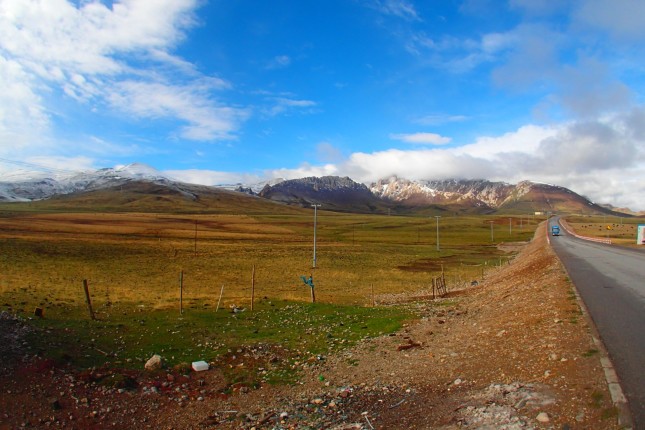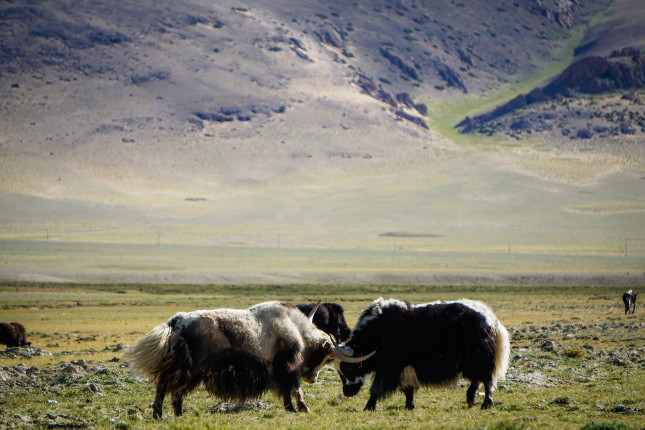-
A Peopled Wilderness: Combining the Best of Chinese Tradition and U.S. Conservation
July 9, 2020 By Teresa Kennedy
In the Western tradition, the term “wilderness” evokes an image of an idyllic and pristine landscape filled with lush plant life and an abundance of animal species. According to Vance Martin, president of the WILD Foundation, this conception of wilderness, even in conservation areas, leaves out a critical species: humans.
There are few corners of the earth that are completely unmarked by impacts or traces of human activity. “If you use a strict concept of wilderness, it prohibits certain human impacts” like extractive industries, Martin said, but “it doesn’t prohibit people.” Over the past two centuries, countries throughout the world have grappled with the question of how much human activity or interference should be permitted within nationally recognized conservation areas.
Where Humans and Wildlife Meet
The United States was the first country to consider the question of human-wilderness interaction when it established Yellowstone National Park in 1872 “as a public park or pleasuring-ground for the benefit and enjoyment of the people.” Despite the groundbreaking shift this constituted for wilderness protection, the sobering side of Yellowstone is how it set a precedent of removing native peoples from their land to create “pristine” nature. Today, U.S. parks remain uninhabited, but to avoid additional environmental injustices, the U.S. National Park Service (NPS) stresses the importance of cooperating with U.S. native peoples. These efforts occur in a number of ways, including through the transfer of bison from Yellowstone to several American Indian tribes in Montana.
Rudy D’Alessandro, NPS International Cooperation Specialist, discussed the tension between conservation and human impacts with me in the context of China, where the government is establishing a unified national park system for better ecological protection. He said, “China has been a civilized society for 5,000 years or more, and the landscape has been built through people’s interactions with it. There is no place that is really totally wild.”
In the second quarter of 2021, China will host the 15th Convention on Biological Diversity Conference of Parties (CBD COP15) in Kunming. The new national park system, which will be the largest in the world when it opens and is the linchpin in the country’s present day conservation efforts, is certain to have a central role in the event’s discussions.
A Chinese System Built Through Cooperation
Since the 1980s, China’s biodiversity has been protected through a hodgepodge system of thousands of nature reserves that were divided into more than 20 different categories of protection. These areas became popular for Chinese and international tourists. However, the lack of uniform standards for ecotourism has meant some areas remain well protected despite increased tourist numbers, while others have permitted the construction of hotels and other infrastructure that damage biologically diverse hotspots. In November 2013, China’s central government announced planning efforts for a unified national park system, meant to create standards that would universally protect the nation’s most important wildlife areas.
In 2015, the Chicago-based Paulson Institute announced it would work with the Chinese government to create trial national parks in nine provinces during the subsequent three years. The first of these pilots, Sanjiangyuan National Park located in Qinghai Province, is expected to open to the public later in 2020. D’Alessandro led a U.S. NPS delegation in May 2019 to this area, which is considered “Asia’s Water Tower,” as it is the source of the Yangtze, Yellow, and Lancang/Mekong Rivers that flow from the Himalayan Mountains into Eastern China, and South and Southeast Asia.

D’Alessandro explains in his Sanjiangyuan trip report that U.S.-China national park cooperation dates back to the late 1980s, when a delegation of NPS officials visited China’s Jiuzhaigou Valley Scenic and Historic Interest Area. A Memorandum of Understanding was signed on national park cooperation during the late 1990s and the pace of exchanges has increased since 2006 as China has planned its national park system.
“There are a lot of good lessons that go back and forth,” says D’Alessandro, who has coordinated these exchanges since 2002. “An important aspect of education is going to see what the other country is doing, which is why these exchanges are so vital. Carrying them out in the near future will be complicated by COVID-19. But we have laid a strong foundation that will allow us to cooperate remotely until in-person exchanges are possible again.”
Wilderness with Chinese Characteristics
Part of Martin’s work with the WILD Foundation is to provide support to Chinese environmentalists in creating a contemporary, Chinese-conceived concept of “wilderness” that involves community stewards. To support this goal, the WILD Foundation published two papers on the Chinese conception of wilderness and its history.
When I spoke with D’Alessandro, he mentioned the importance of community rangers in Sanjiangyuan, many of whom are nomadic Tibetan yak herders. Since the NPS does not permit livestock grazing within parks, this is a situation without an American analogue. D’Alessandro said the NPS delegation appreciated the length of time these herders and their ancestors have lived in Sanjiangyuan and that they know best how to manage the yak grazing that has shaped the region’s landscape over millennia. The NPS team is very supportive of the continued presence of traditional yak herding within Sanjiangyuan’s borders, and even recommends removing the fences they saw.
Dr. Kui Peng, a Program Manager at the Beijing-based NGO think tank Global Environmental Institute, backed up D’Alessandro’s sentiments, stating that “the United States can learn from China’s experience in managing local community members, especially the practice of considering the lifestyle and interests of local residents.” Dr. Peng has worked with Sanjiangyuan communities for seven years to foster better conservation practices while supporting economic development. He believes China can also learn from the U.S. national parks, from their management system to their rich education programs, such as the annual citizen science BioBlitz in which one day a year visitors help inventory the animals and plants in the parks. Dr. Peng added that the United States has valuable lessons to offer in the way that government, private organizations, and citizens participate in park operations and functions.

Sanjiangyuan’s landscape has been shaped by local yak herding over the course of millennia. Photo Credit: Shutterstock
Although countries around the world laud the U.S. national park system as the gold standard for conservation, it should not be overlooked that its establishment occurred in the midst of a century’s worth of U.S. nation-building policies meant to dispossess and forcibly remove American Indians from their territory. China has a meaningful opportunity now to avoid such mistakes. It would do well to align the norm for its treatment of local communities as it has in Sanjiangyuan, rather than to make the large-scale relocations planned for other pilot parks, such as the Northeast Tiger and Leopard National Park.
From recent efforts to begin rewilding near Beijing to China’s nascent national park system, initiatives by Chinese government, nongovernmental organizations, and researchers to formally establish biodiversity and wilderness protection mechanisms in China hold a great amount of potential. These efforts are impressive for their scale and their aim to protect and promote flourishing nature without stripping away the link between humans and these landscapes. Although there are many details in China’s national park system that remain to be determined, the processes for protecting the country’s wilderness through an organically derived framework are already underway. China stands to set a strong precedent in creating a national park system that integrates the best of the old with new and innovative practices to create a standard for other countries to follow in the future.
Teresa Kennedy is the External Relations Coordinator at Global Environmental Institute, an independent environmental non-profit, nongovernmental organization and think tank based in Beijing. She also is currently a Research Assistant at the Wilson Center’s China Environment Forum. Teresa holds a Master’s in China Studies from Peking University’s Yenching Academy.
Sources: Birding Beijing, China Dialogue, Chinese Landscape Architecture, Global Environmental Institute, Journal of Wilderness, Mongabay, National Center for Biotechnology Information, The New York Times, The Paulson Institute, SupChina, The U.S. National Park Service, The WILD Foundation, The Woodrow Wilson Center.
Lead photo caption: Even in the wildest parts of China, human impacts and wilderness are inevitably intertwined. Photo Source: Rudy D’Alessandro.
 A Publication of the Stimson Center.
A Publication of the Stimson Center.





